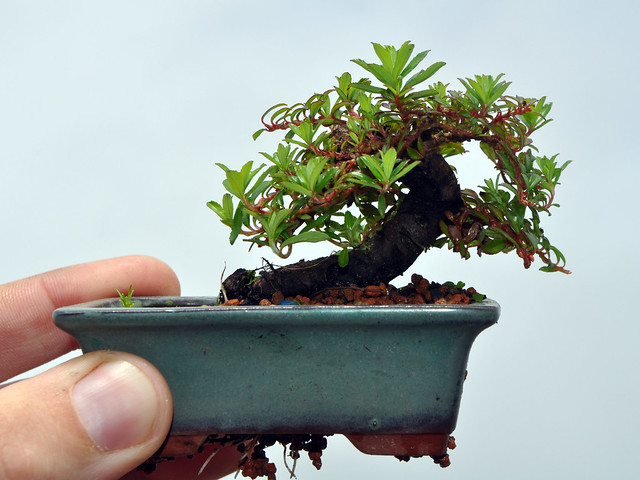In other words, I have absolutely no idea what to reflect on, other than I know there's been a severe drought this winter, but the amount of rain we're getting now is ridiculous.
Dwarf willow (Salix herbacea)
You might've guessed from the name of this plant that it's actually a tree. The dwarf willow is the smallest tree in the world, and one of the smallest woody plants out there. The reason for its size is the factors of its habitat: it lives in freezing alpine and arctic environments. If you want to research further, you'd be hard pressed to find a plant up there in the north much bigger than this. And I'm not forgetting the actual pines up there, I mean finding large plants in the wind-swept tundras and moorlands. Its leaves are round, green and about the length of 1 cm. The dwarf willow has female and male catskins, which means it's appearance varies. It can be yellowish (male) or red (female). Based on this, I conclude that the willow above is female. I'm a botanist!
They're mostly found on both sides of the northern Atlantic region, including Greenland, Canada, Northwest Asia, and in the northern ranges of the Appalachian Mountains. It grows in ranges about 1,500 m altitude and over, but that doesn't stop people from bringing it down closer to sea level. The dwarf willow is a popular choice for advanced bonsai growers, due to their delicate frame, size, and the color of their buds. Exhibit A:
Just kidding, no more exhibits, I had a really nice picture of an even smaller bonsai willow, but I can't find it again. Curses.
Fun Facts:
- It's the only type of tree that grows in the tundra.
- It can only grow up to a maximum of 10 cm: About the length of an average human's palm. However, they average to about 5 cm, but can spread itself out quite a bit.
- Its other names include snowed willow and least willow.
- Texts from Sumer, Egypt, and Assyria that the bark and leaves of the willow tree can be used to cure aches and fevers. I don't think they meant this specific willow. Whatever. Still interesting.
- The Ancient Greeks also believed this.
- So did the Native Americans.
- It should be noted that not all people accept the dwarf willow as the smallest tree. Some say it doesn't qualify, and that it's actually a small shrub.



No comments:
Post a Comment